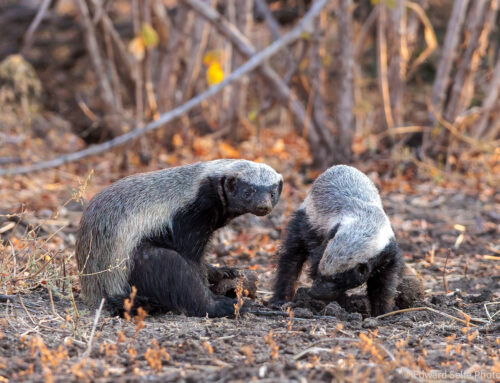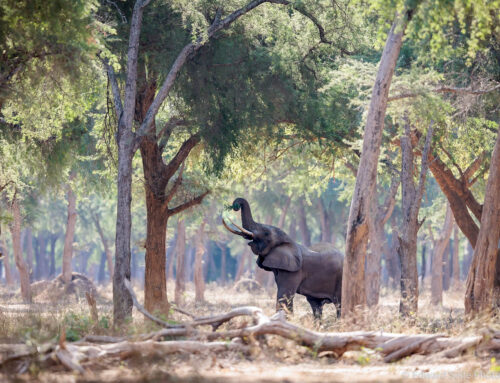I had been looking forward to this safari for months. Steve – a many times return guest of mine – was bringing a friend of his, Peter, who he had met on a previous safari. But there was a different perspective this time around; Steve and Peter wanted to see the Luangwa in the green season, both of them having travelled to Africa only in the driest months previously.
We discussed February and March and decided that the consistent rain and early sunrise would make a photo safari tricky; April seemed a good option but the ungraded network of roads would limit our movements. June and onwards would be too similar in feel to the late-season trips that they had done previously….so we settled on a May safari.
Steve’s previous trips had given him some of the best viewings that I’ve ever had in Luangwa. Sightings in May would be less easy to predict and the presences of lots of inland water would mean that game would certainly be more spread out. Having said that, the different feel of the safari – including beautiful vegetation, clear blue skies and crisp light – would make up for the change in game density.
Peter was visiting Luangwa for the first time but declared an interest in the clear skies for night photography and a preference for a rich, vibrant bush experience for his safari this time around. May seemed like a good time for both of them, so we selected two camps in different areas of the park, and booked 5 nights at each.
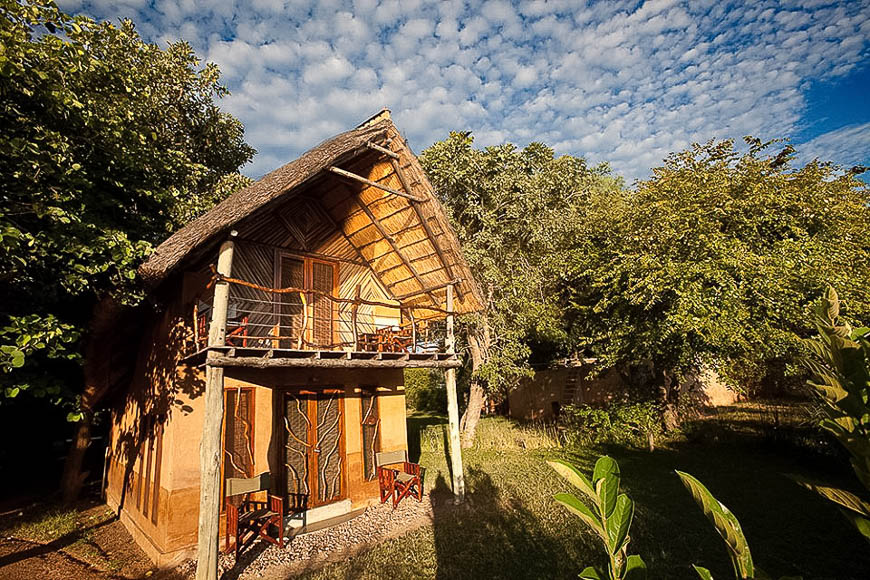
One of Track & Trail’s river-front chalets
The safari started at Track & Trail River Camp with a flurry of outstanding sightings. On our first evening we spent time with zebras feeding in the long grassland areas. Putting the light behind the zebras during the late afternoon gives them shape, and creates more interesting photos.
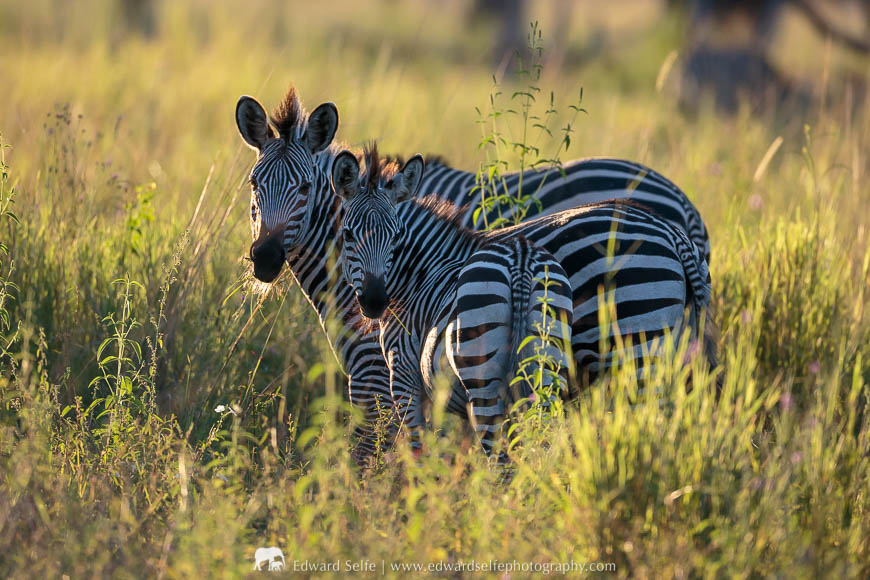
While we were watching them, we heard baboons starting to call in the distance. They were giving their unmistakable “wuh-hoo” call indicating that they had caught sight of a leopard. Knowing that a young male lived in the dry channel that they were overlooking, we moved quickly over and found the baboons in trees and on raised stumps, staring in to a thicket.
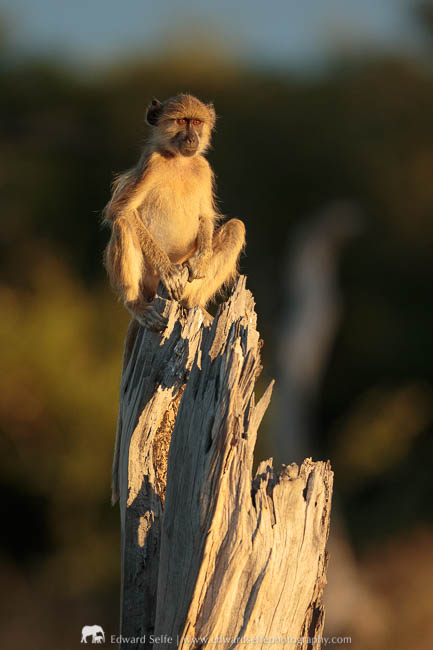
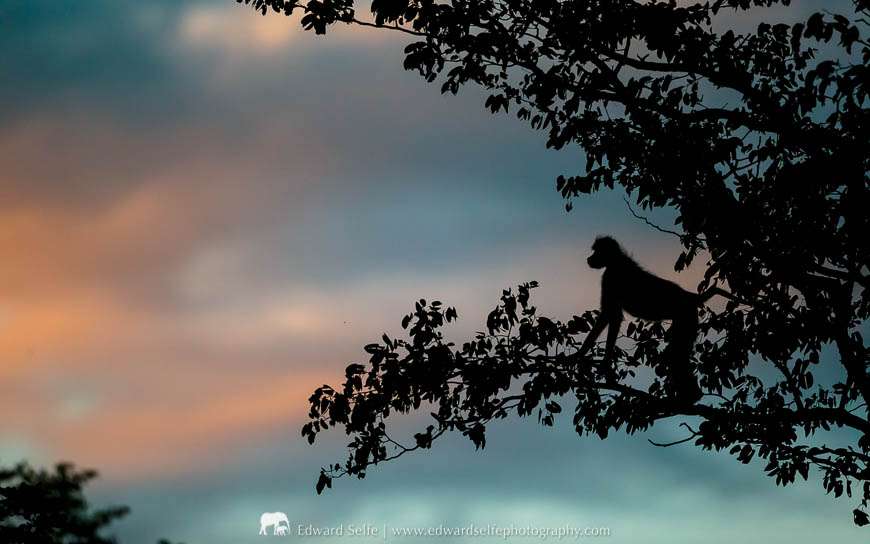
We found the leopard as he crossed the track in front of us and climbed a nearby sausage tree. We moved in slowly, preferring not to disturb him. By the time we got in close, the light was very low, so we opted for a spotlight and gently lit him with the edge of the beam. He seemed content to sleep! We knew this would not be our best leopard encounter of the week, but we were pretty excited to have found one within the first 2 hours of entering the National Park; such is the magic of South Luangwa!
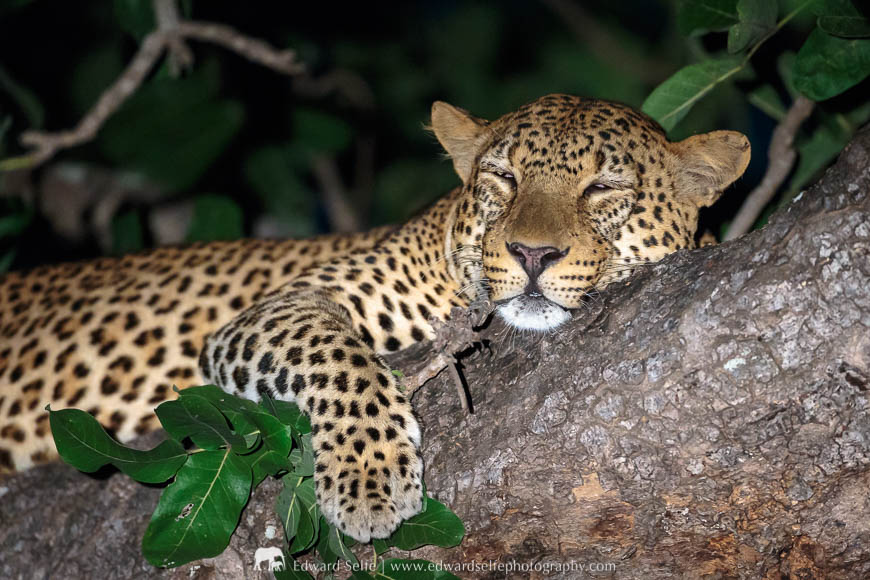
Peter had been taking photos of owls in the USA before his trip. I knew where a pair of Pel’s fishing owls had been raising their chick over the preceding couple of months, so I drove slowly along the edge of the lagoon, hoping to pick them up in the spotlight. They appeared to have moved on, but I decided to check further down the lagoon where the water was a bit deeper, and we found this youngster resting on a vine, waiting for his parents to return with some fish!
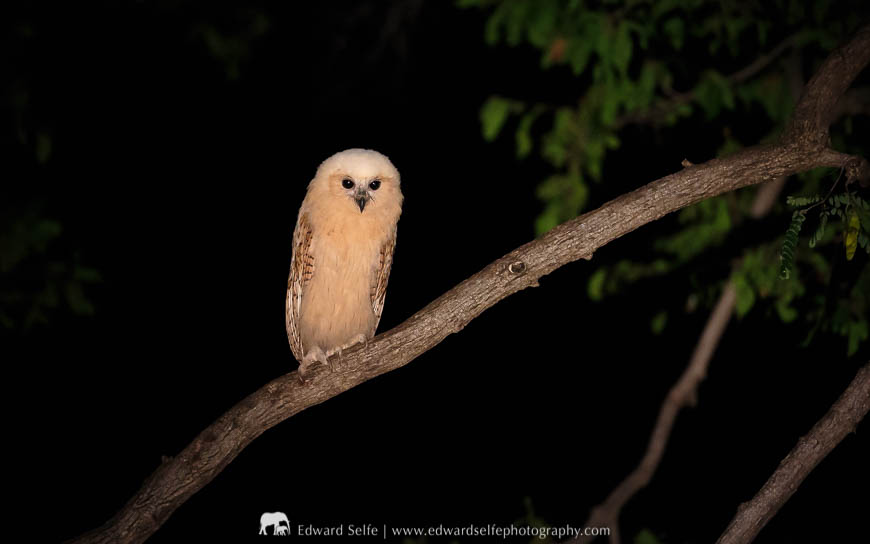
In May, the sun only rises at around 06.00. But there is less dust in the atmosphere than later in the year, so we have to make the very best of the early part of the morning safari before the sun gets too bright. We started early and were greeted with the sound of lion calls from the moment we left our chalets. We scouted a dense and prey-rich area from where we had heard the calls, but the lions were not visible; this was always a risk with an early-season safari when the vegetation is still tall and thick. We left the area where the lions had been calling, and almost immediately bumped into a leopard! She is a female I know very well, who roams widely across the central area of the park, apparently refusing to conform to the principle of territory as we understand it!
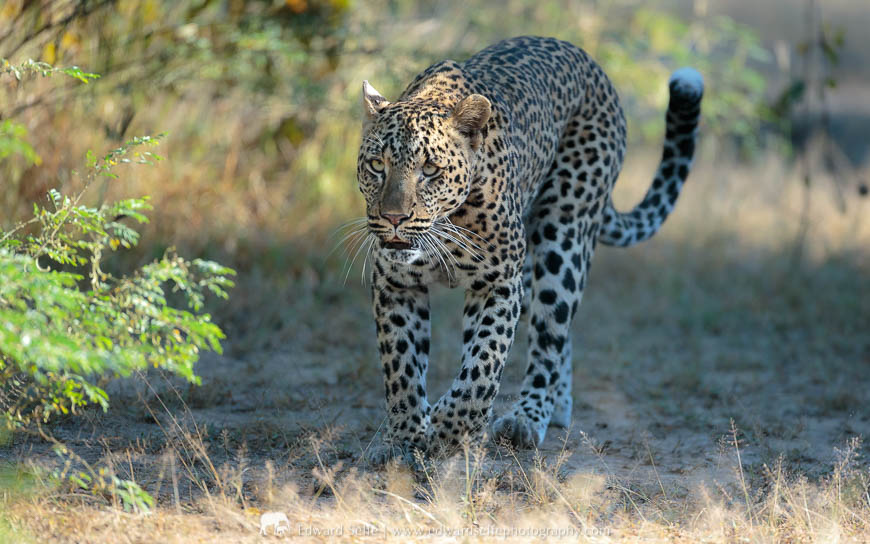
She obligingly walked right towards us, sauntered round the front of our vehicle and we quickly lost her in the undergrowth. She was certainly hunting and had gone into covert mode!
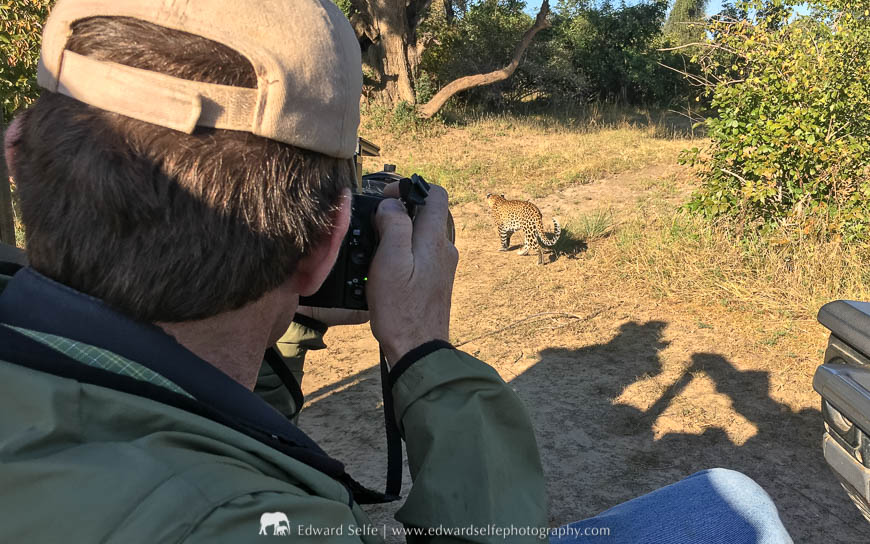
While watching the leopard, we heard the lions calling again! So we turned back and finally found them, right by the road, but buried in deep grass. It seemed that they had killed a small antelope but there was very little left by that point. We waited for a while, and were rewarded when the whole pride emerged from the long grass and walked right towards us and flopped down in the shade of a nearby tree. The light was bright by this stage, but I positioned us so that we got some great photos as they came through the open shade of some trees. The pride is made up of 5 adult females, three 9-month old cubs and the famous male coalition of Ginger & Garlic.
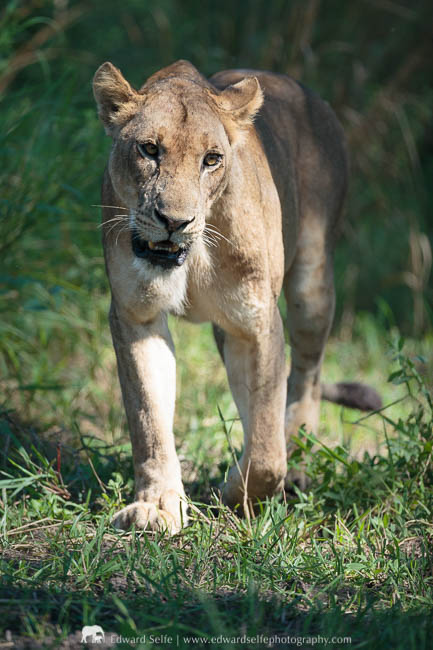
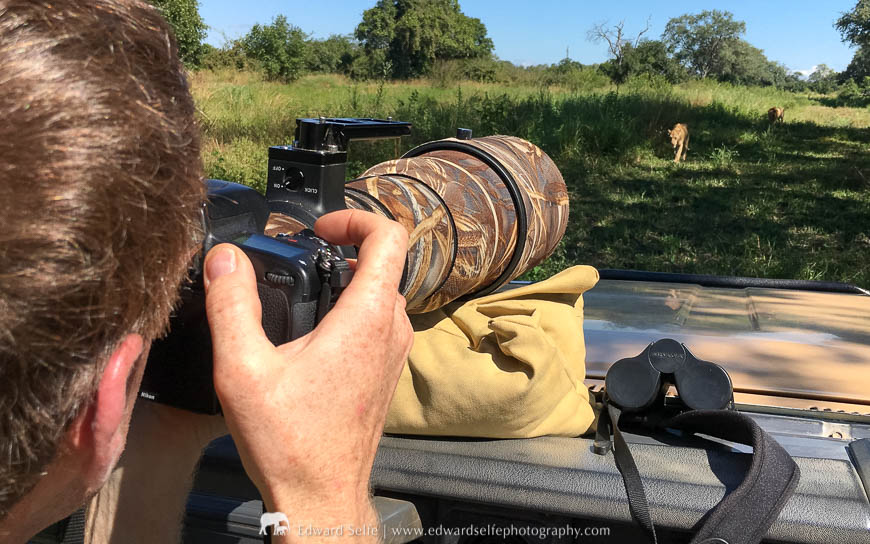
Guests come to Luangwa for great sightings, to avoid the safari crowds and for the beautiful landscapes and authentic safari experience. But it is leopard that the Luangwa has justly become famous for, and I wanted Peter and Steve to know that an early-season safari can still reveal the kind of sightings that have made Luangwa famous! Finding leopards is an art, and I made sure to prioritise encounters with these spotty cats right at the top of the list. On our second afternoon, I picked up the sound of monkey alarm calls far in the distance. I drove a road that is rarely used in the early season – it’s pretty bumpy! – and tracked down a large male leopard resting in a leadwood tree.
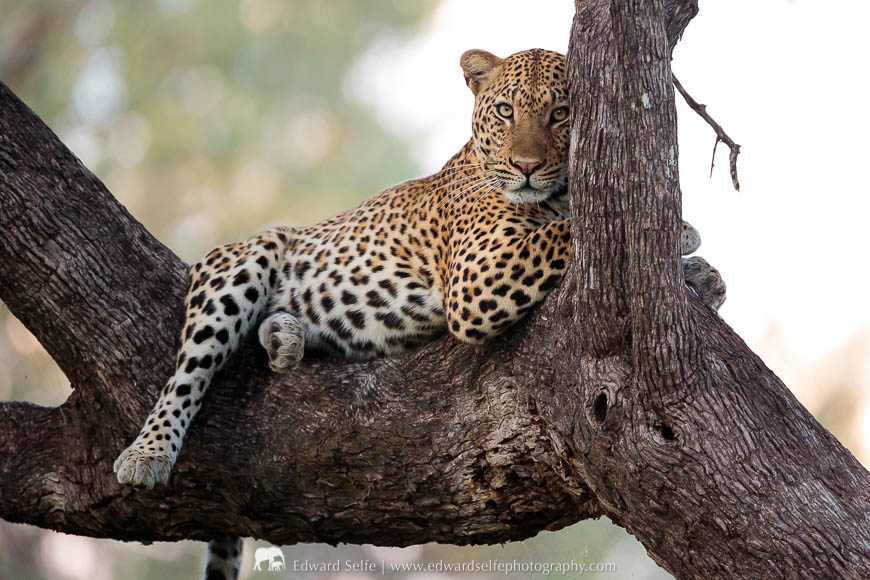
We spent more than 2 hours with this leopard, waiting for him to rise, stretch and come down for the afternoon’s activities. At first he seemed nervous – as many large male leopards are – but he soon settled and allowed us to change our position and move around him. We took several hundred photos, waiting for the afternoon light to illuminate him, but a large tree blocked this from happening…such is Nature! Even so, we had a great time with him, and because we had heard the monkeys, and taken the road less travelled, we had this sighting entirely to ourselves.
On our way back to camp that evening, we took the road the led past the lions, and we stopped to take some shots of Garlic – one of the pride males – with the illumination of another vehicle’s light, a trick which is only possible when there are other vehicles around!
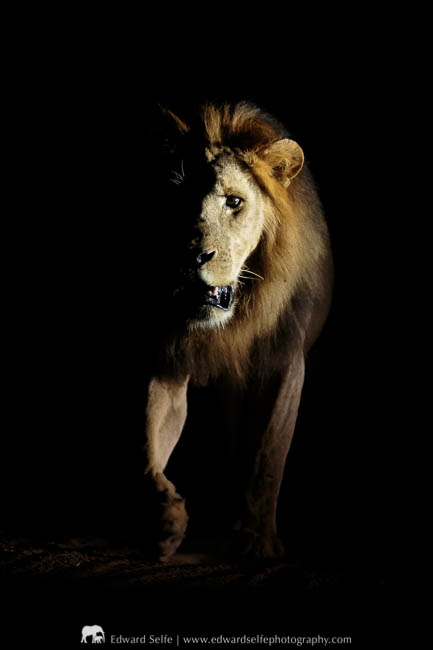
Starting early the following morning, after a beautiful sunrise, we found two Crowned Cranes feeding in a seasonal pan. The light was soft and brought out the most intense colours. We chose to shoot against it, giving a backlit glow to the cranes’ beautiful plumage.
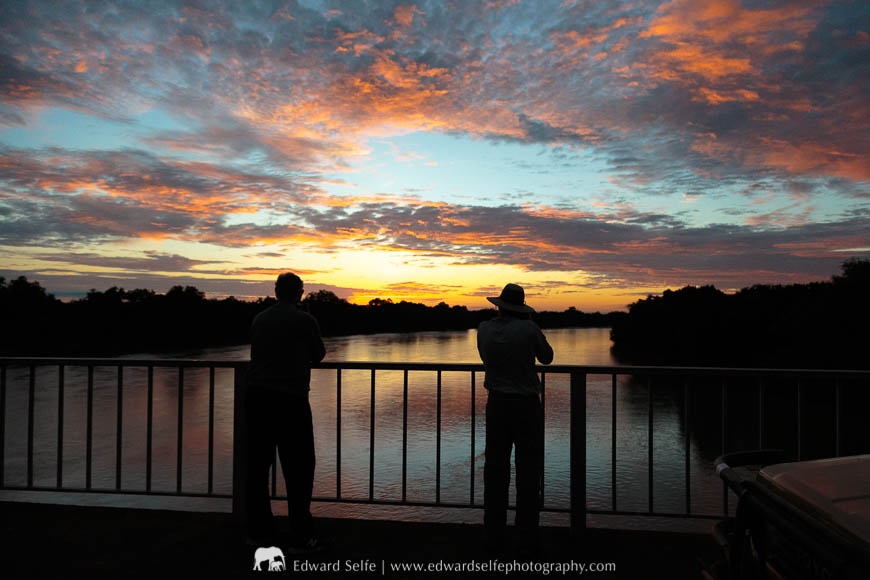
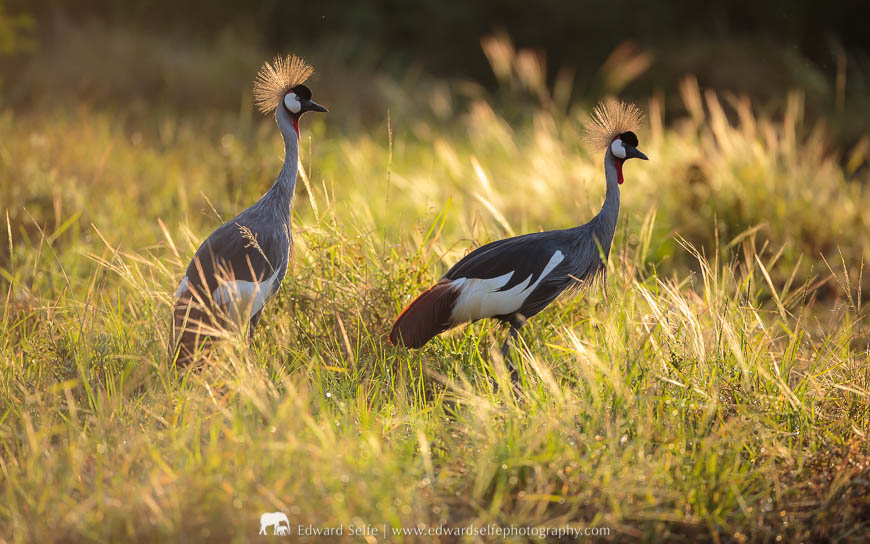
This morning’s drive was quiet, as happens sometimes in wild places. We spent time with a few Ground Hornbills, a squirrel gave us some fun opportunities as a silhouette, and we did some birding and mammal watching. While there is always lots to see in the Luangwa, there are days when the light, sightings and angles don’t align in your favour. It’s for this reason that I always suggest photographers hoping for the best sightings should stay at least a week, and for 10 days if possible. This allows time for the sightings to flow at their own speed, and prevents the temptation to rush around because time is short; Nature can’t be rushed.
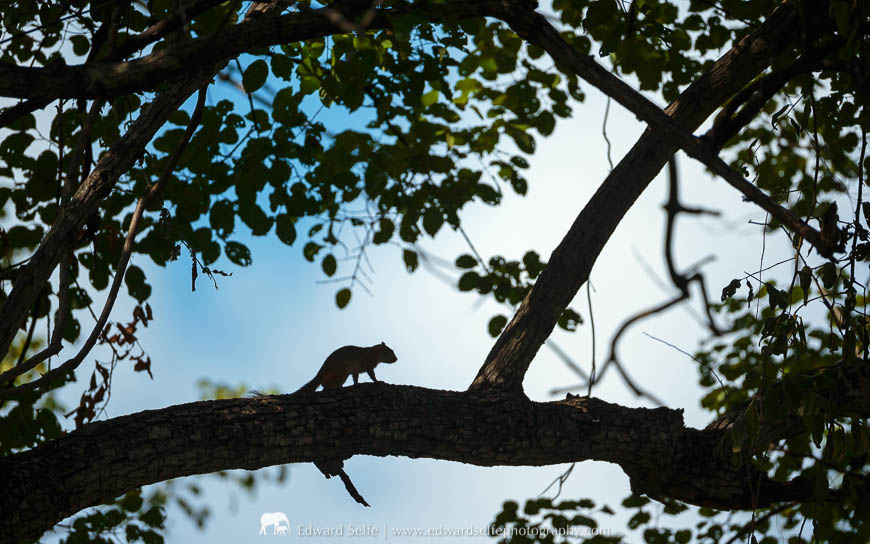
During the day, we took a bit of time to review some of the techniques that we’d been discussing on the safari and ensuring that Peter & Steve’s images were coming out how they wanted! I have been guiding photo safaris for a long time, so I am able to keep a calm head when things get exciting, but it’s easy to lose concentration if you spend less time on safari; therefore regular photo reviews is always something that I offer to ensure that small errors of technique in focusing, ISO control and composition are addressed early on.
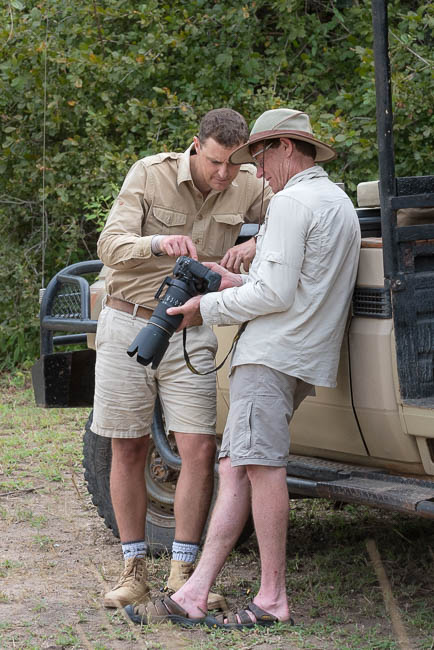
I know that Steve is a good photographer, having guided him several times in the past, but I didn’t know Peter before this trip. I was really pleased to see how well he was handling his new environment, and particularly that he was choosing well which shots to take. He had worked out already what would work and what would not and he didn’t waste time shooting situations that won’t make pleasing images.
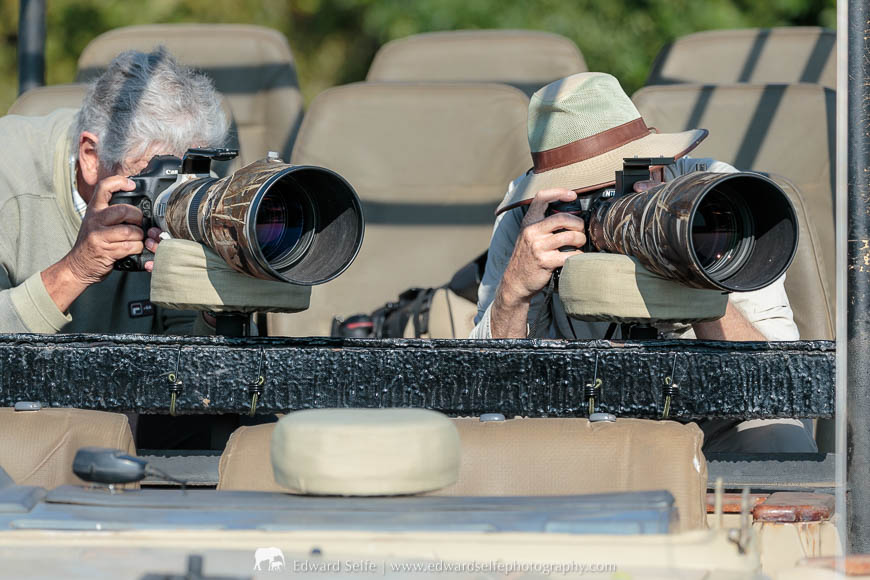
I am careful to offer photographic advice freely on safari, but not to try and change guests’ technique too quickly. It may be that no adjustments are necessary, but if they are, I try to do this progressively, allowing time for the changes to settle in; the very last thing that I want is for guests to miss shots because they are grappling with a new method of making their images. In Peter’s case, we discussed the merits of fully Manual mode compared to Aperture priority mode, and I guided him into using Aperture priority most of the time, but keeping Manual as a fall-back when changing lighting conditions meant that subsequent images were very differently exposed. In the end, the proof of the method is in the images, and I was very pleased to see the shots that Peter was creating, both when looking over his shoulder and also back in camp on his laptop. You can have a look at his shots on Instagram @peterismert and I hope to feature a blog of his and Steve’s images soon.
Back to safari – on day 3, we found no sign of the lions, so chose to head to Lupunga, an area of the Luangwa where aquatic grasses provide a plentiful food source for endless elephants. So it was that we found a large family herd in the area. We spent an hour with them, changing our angles and enjoying watching the calves playing together. With a clear view, and no obstructing bushes, we could compose a whole range of shots, including close-ups, and wider shots of the whole herd.
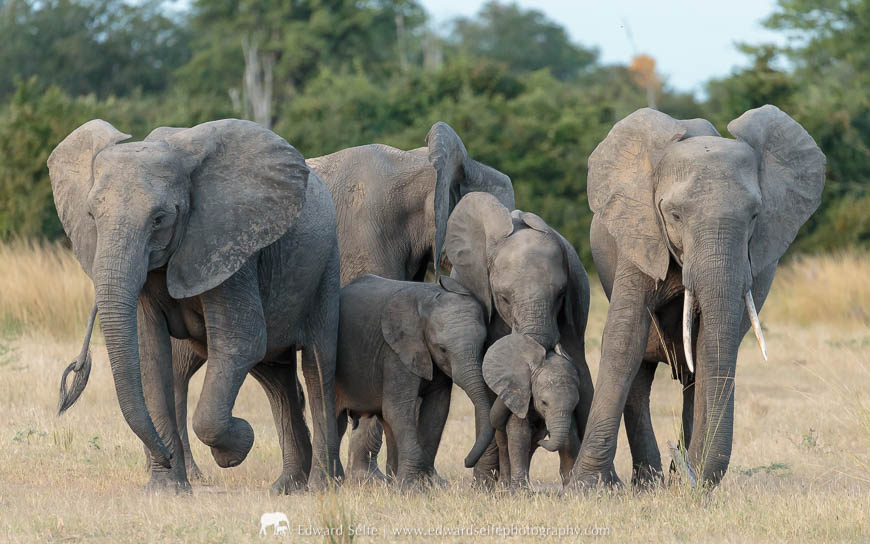
I particularly liked this moment when the females grouped round the calves, but the youngsters continued their antics in the middle of the melee!
We enjoyed a superb sunset that evening and, unusually, took time out to stop and enjoy it – we often miss sunset on my safaris because we are busy photographing something in the pink light of evening!
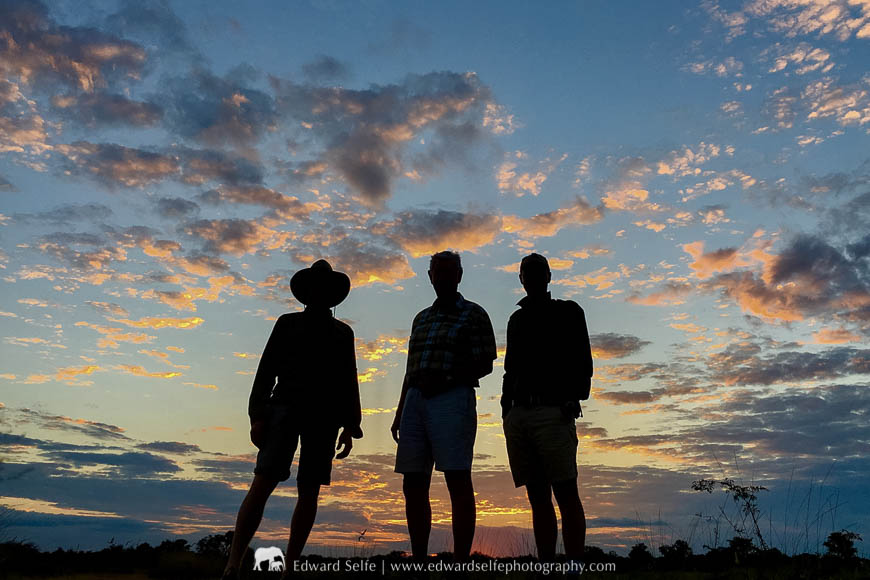
The following day saw the start of an interesting situation surrounding an elephant that had died in a gully. It wasn’t clear what had caused the elephant’s demise, but there was no indication of foul play, so we enjoyed the resulting hyaena and vulture drama, knowing that Nature was taking her course.
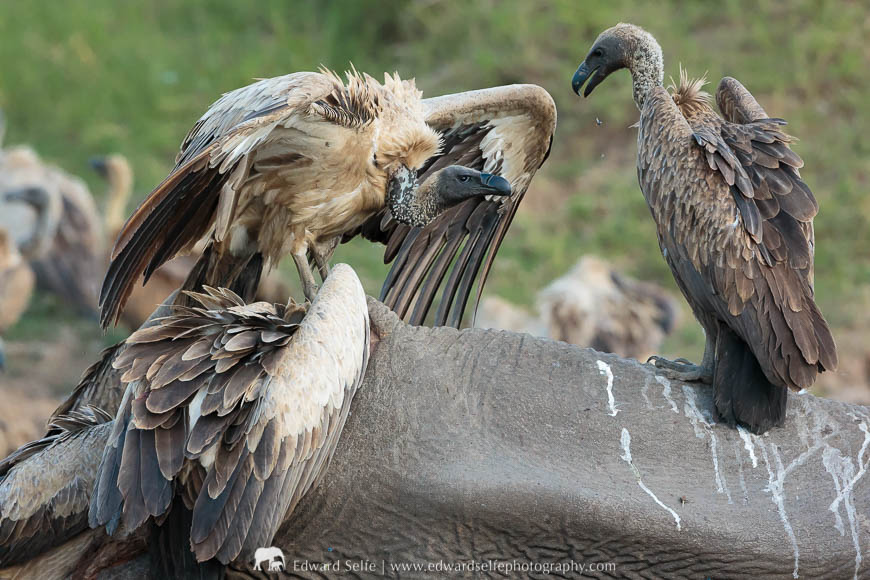
Such a large meal attracts scavengers of all varieties and, over the next couple of days, hyaenas, 4 species of vulture, marabout storks, Bateleur eagles and lions joined the party, all hoping for a share of the spoils. The best action was on the first afternoon when the hyaenas had fed and moved off, but vultures were still arriving in large numbers. We positioned ourselves in the entrance to the gully, giving us a view of the action on the carcass, but also a chance to photograph the vultures as they landed among their colleagues on the plain above the gully.
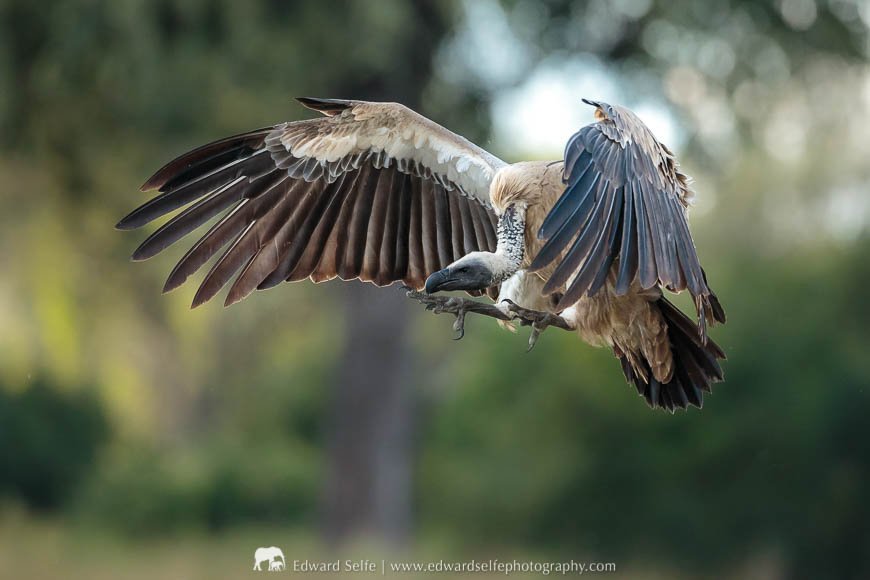
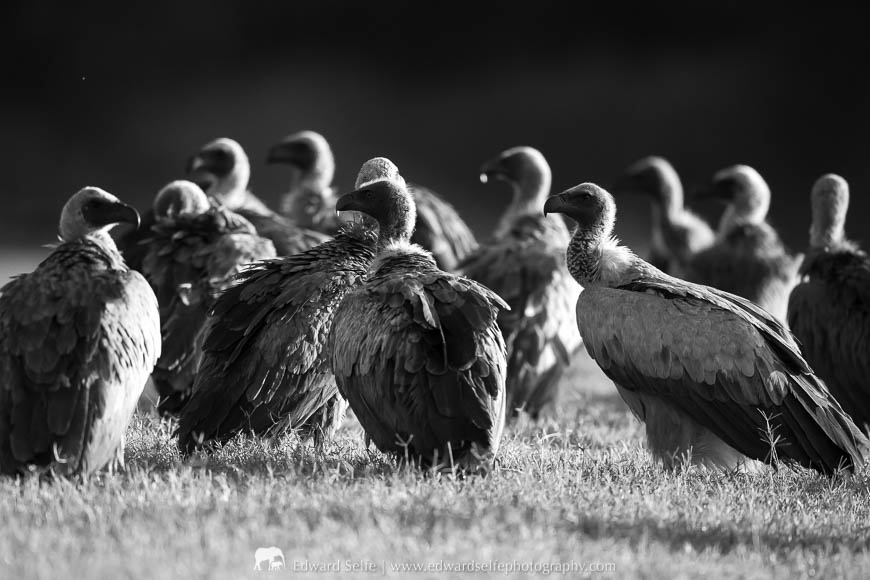
The lions moved in during the night, so we headed to the site very early the following morning to see what had developed. The lions had fed so were quite full, but they were lying around the area, trying to digest! Ginger, Garlic and the females were all there, with Ginger giving us the best photo opportunities.
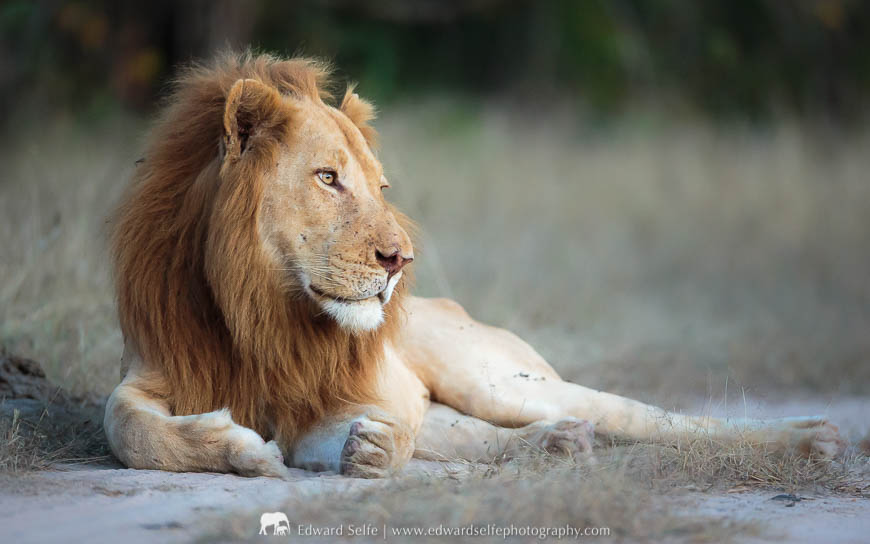
April & May are the months of the impalas’ rut, so our safari was conducted against the constant backdrop of battling rams and loud, throaty snorts. The rams’ posturing regularly develops into short, feisty battles which are great to photograph. We were lucky to be in the right spot for a massive battle between two large rams.
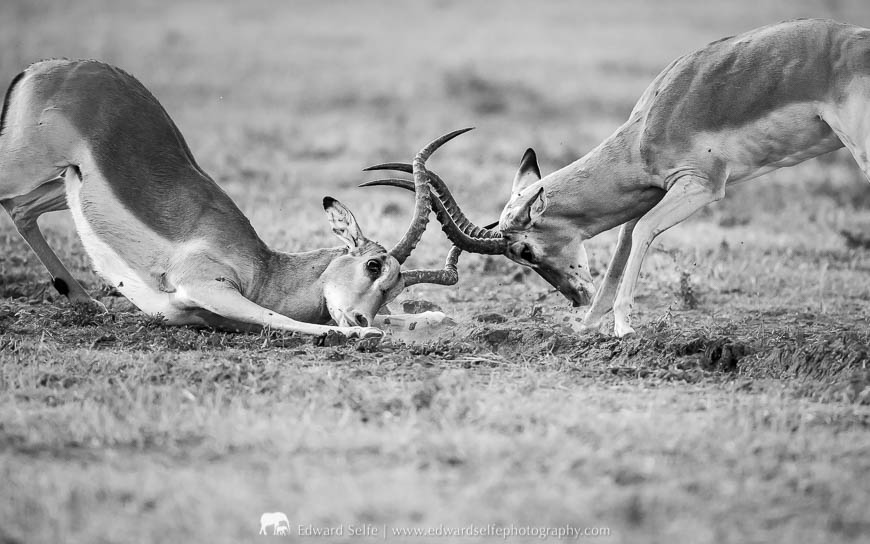
The following morning, we went to a different area of the park, keen to see some new scenery and try to get onto the islands behind the large lagoons that fill during the rains. Many of these islands have been cut off since the start of the rains but, as the gullies dry out, we are able to cross them for the first time in months. We did this and took great pleasure in being the first set of wheels to explore the magical “Luangwa Wafwa” island in the central area of the park.
This turned out to be a great option as we found a zebra and her foal, and also a great sighting of a giraffe and her calf…perhaps they knew Mothering Sunday was around the corner!
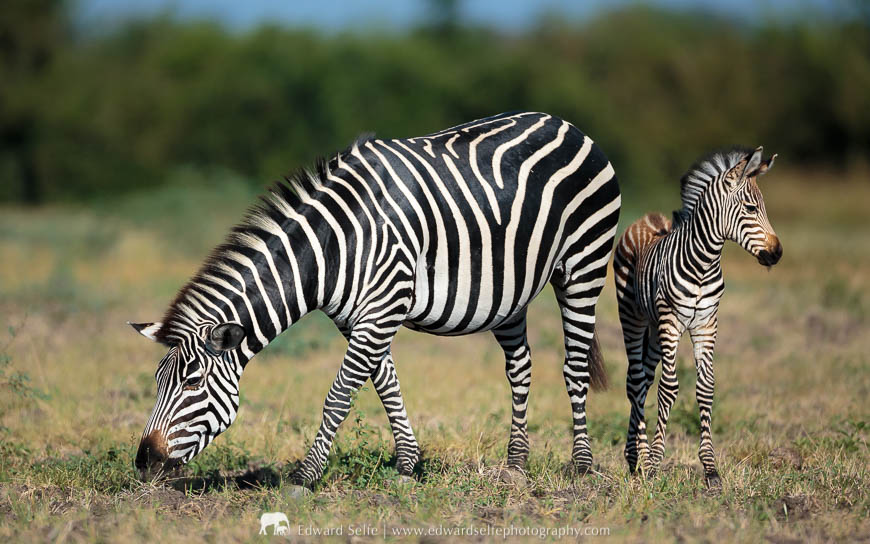
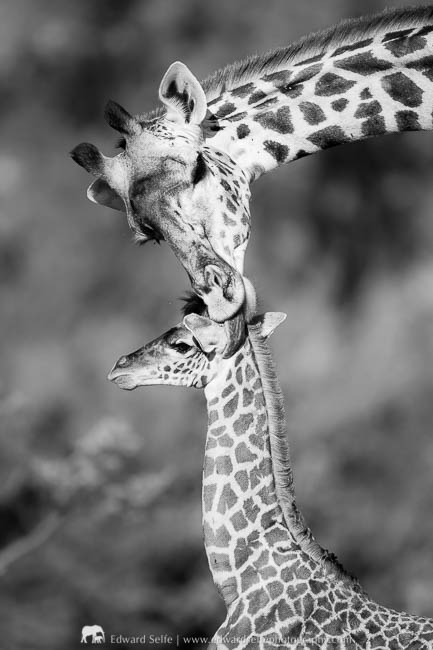
We searched high and low in all the likely sausage and mahogany trees for a leopard, and we stopped regularly to listen for likely sounds, but the island was withholding some treasures that day!
This was our last day in the central area of the park, so we packed up and headed to Chichele Lodge as part of our morning drive the following day. Early on, we found a herd of very placid elephants so we chose to stop and enjoy watching them for a while. What we couldn’t have predicted was that they would then approach the vehicle, stop within 2 meters of us, and go to sleep! We spent nearly an hour with them as the babies snored and the female rested with her head low and her trunk laid out on the ground. It was magic!
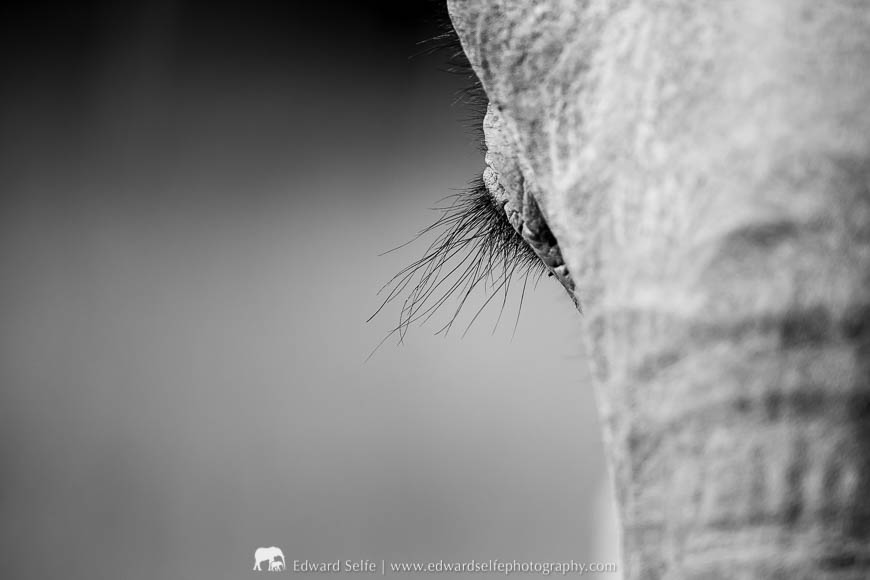
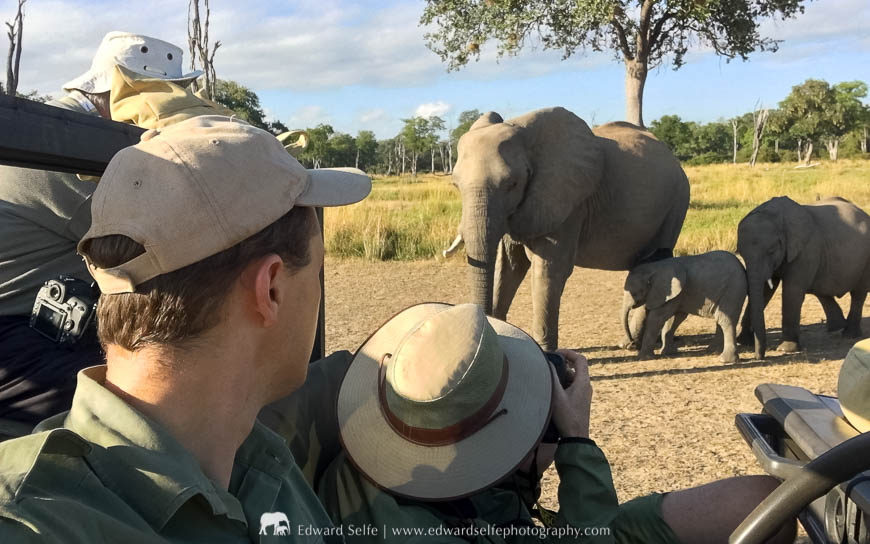
We continued and finished the morning at Chichele Lodge in time for lunch. Not wanting to miss any time on safari, we set out early that same afternoon. I had spent time in previous seasons with a leopard that used to hunt in a particular gully nearby. We decided to work our way slowly towards that point, taking in whatever we found along the route.
As we approached the gully, I could tell something was up. The antelope were not barking an alarm, but several heads were up and there was tension in the scene. We slowed down as we approached the gully, and stopped in the bottom. Sure enough, there she was! Our leopard had showed up just where I had hoped. Sadly, due to overhanging grass, we had not seen her until we were quite close, and she decided to climb out and head for the thickets to avoid detection by the antelope. But we were very glad to have found her, even if she gave us no photo chances that time.
We followed where she had headed, and tracked her through the bushes. She popped out into a clearing and gave us the classic leopard glance, with tail held high over her back, before she melted once again into the bushes. It was still quite light, so we suspected that she would climb a tree and rest until the evening came. Leopards in Luangwa appear to hunt either by day – when antelope are not expecting it – or by night when they enjoy more concealment. Evenings and early mornings are perhaps their least successful times as prey are very vigilant and still able to see the predator.
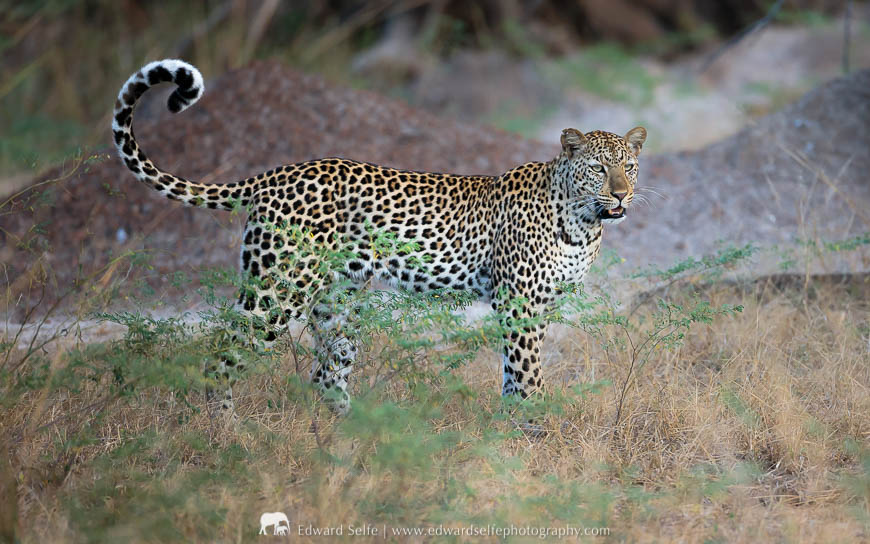
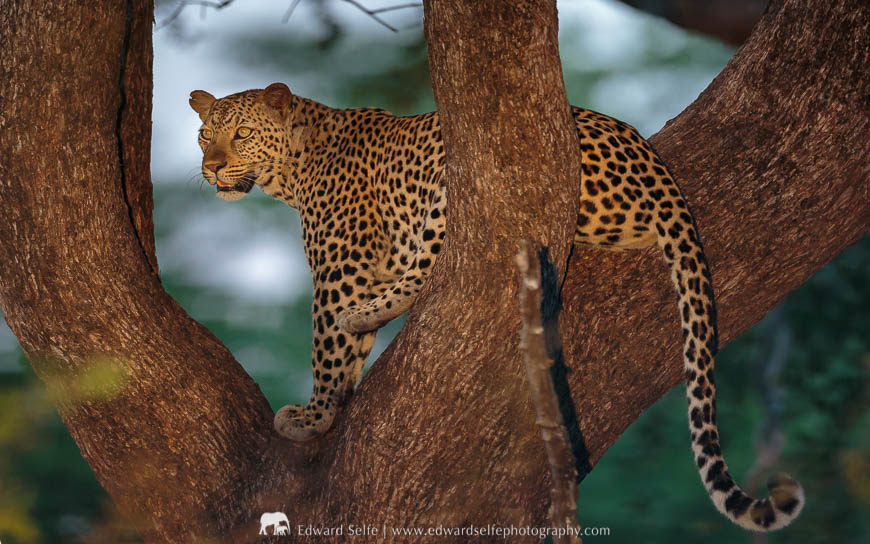
As darkness fell, she came down from her high leadwood tree and paused to look around from a low fork.
The following 2 days were quieter on the predator front. The area around Chichele has a less developed road network which slightly limited our access to certain areas so early in the season, but there were also times when we tracked predators but just missed them; these things happen in the bush. So we focused our attentions on the sightings that were on offer and enjoyed encounters with elephants birds, zebras and so many giraffes that we totally lost count!
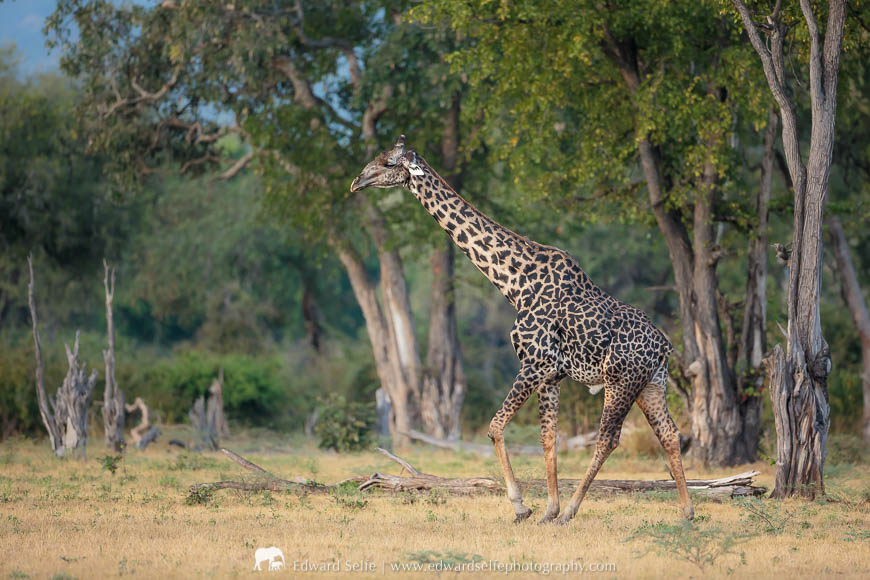
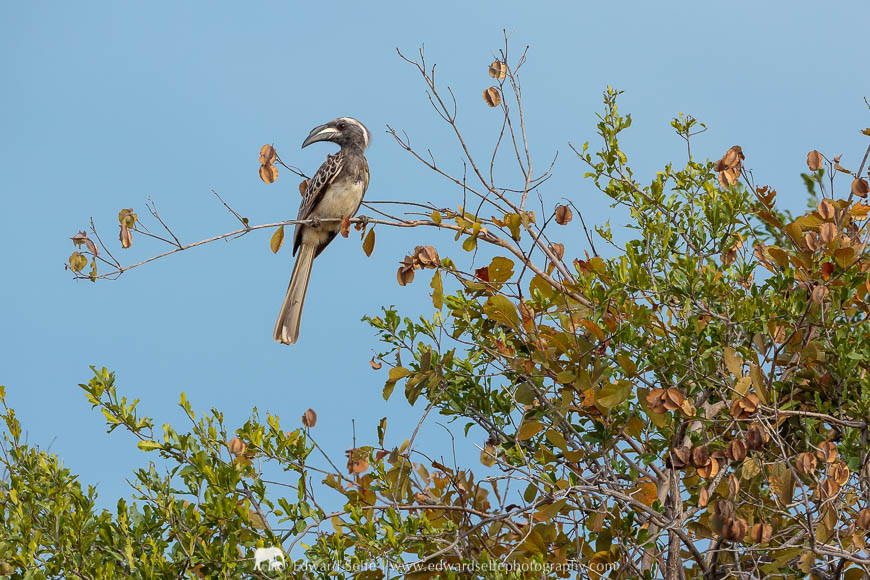
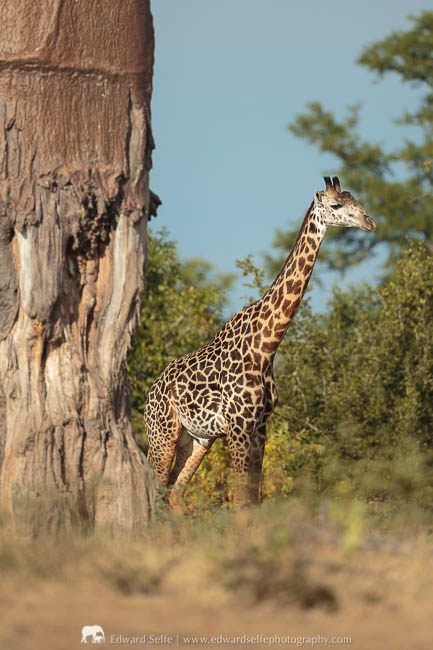
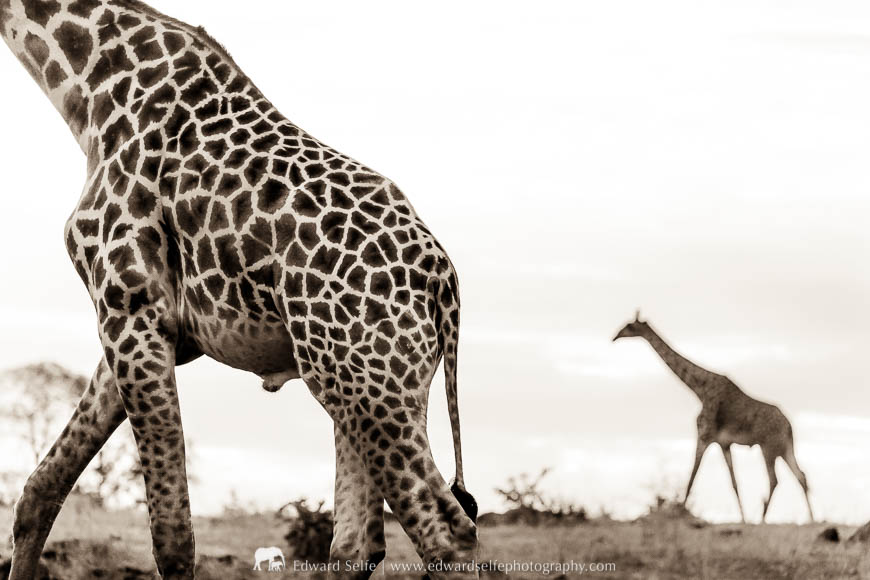
As the light levels fell each evening, we spent time working on panning blur images; these can be created with a slow shutter speed at any time of the day, but the soft, low-contrast light of sunset avoids hard blacks and shadows. Our first opportunity was with a small herd of elephants; as the light fell, we chose a wide aperture, and created a slow shutter speed by lowering the ISO dramatically.
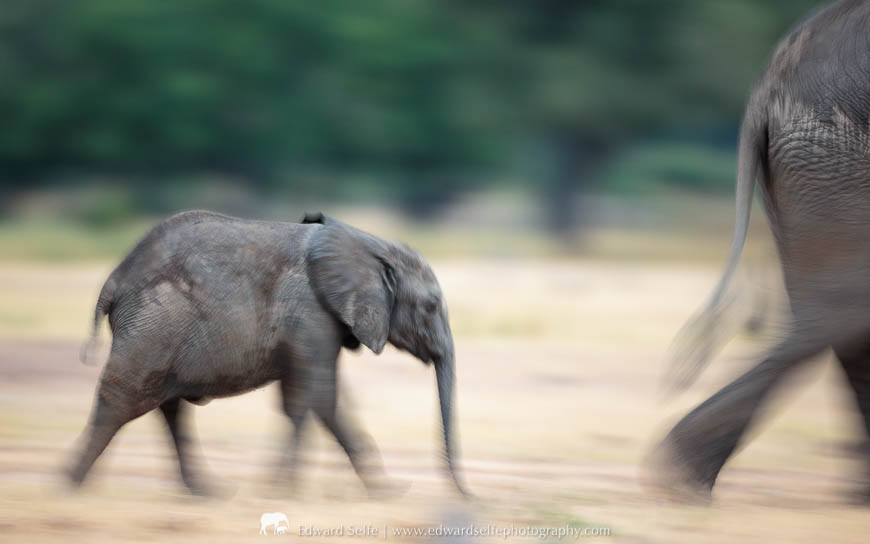
Including the mother’s rump adds scale and a grounding point for the image.
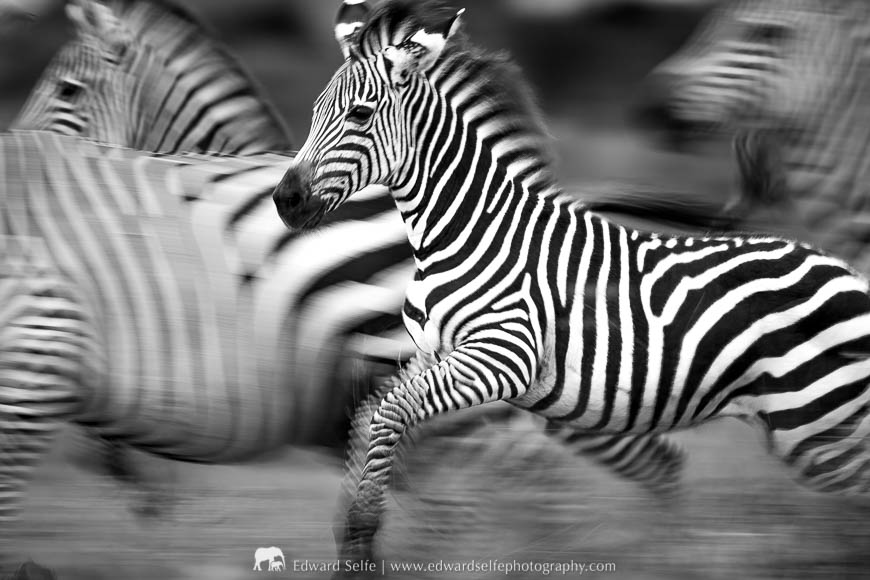
This close up cuts off limbs, ears and other body parts but the balance of the image is retained.
One afternoon, we even had a short, very heavy downpour which forced us back to camp for a short time while the rain stopped. Canopies over vehicles offer some protection from the sun, but not much from the horizontal rain! Added to this, we had taken the canopy off to enable us to photograph leopards and birds in trees.
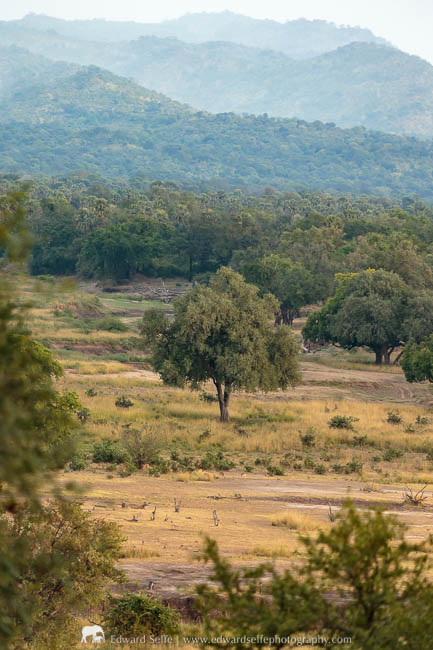
As tends to happen, we were scouting an area looking for elephants to photograph, when we heard baboons calling. On listening for a second, I could tell that this was a leopard warning call, so we quartered the area, searching for a leopard sneaking away from the large primates. It took some time but we eventually tracked her down to a nearby sausage tree where she was resting out of sight. During our search, we found a 2-day old puku skin in a tree, and it may be that she had been feeding on that and been spotted by the baboons when she came down after finishing the carcass.
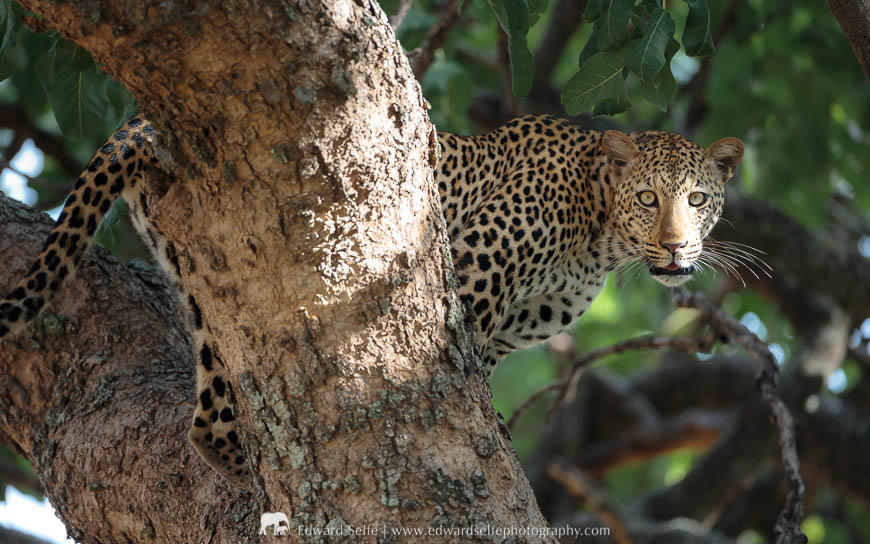
Anyhow, we spent a bit of time with her before she climbed down and disappeared into a gulley. With a day to go, we wondered if that was to be our final leopard encounter, but I should have known better where the Luangwa is concerned!
At the end of our morning drive, we met the team from Chichele Lodge at a beautiful spot on the river for a surprise bush lunch. This was a real treat and an unexpected bonus!
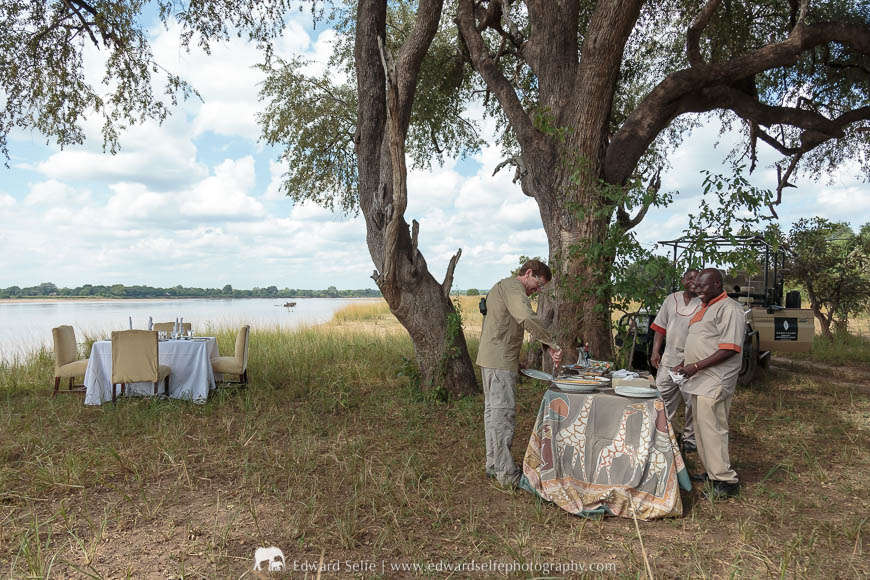
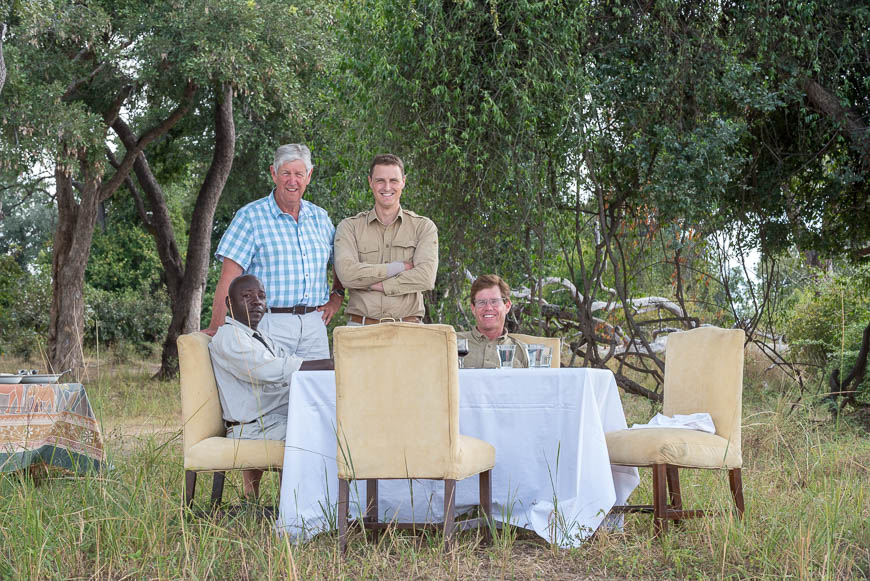
Visiting a new area in the evening, we came across a leopard feeding on an impala carcass deep in the bottom of a bush. Wondering what had happened, we cast around and found a second leopard observing enviously from some distance away. Snapping some photos and comparing to my records of previous years, I worked out that the female was the mother of the juvenile male in the bottom of the bush. As a two-and-a-half year old leopard, the male is beginning to become independent, but will likely still enjoy handouts from his mother!
However in this case, it seemed that he was not willing to share at all. He was a little nervous around the vehicles (which he was even as a cub) and abandoned the carcass at one point and lay in a river-bed some distance away. His mother stalked in and started to feed, which prompted the male to charge across the sand and drive her out of the bush. This happened no less than 3 times in succession! Such is the fiercely independent nature of leopards!
By trying to predict the action – which was tricky with 2 leopards, a carcass, lots of bushes and a river bed! – we managed to get some lovely images of the two of them, though none in the same shot….obviously!
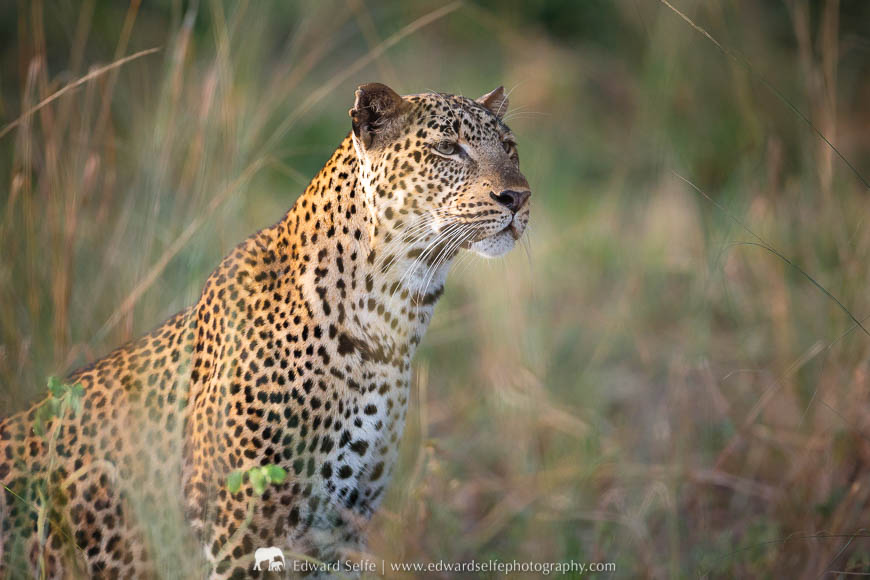
The hungry female looks longingly at her son feeding in the bush.
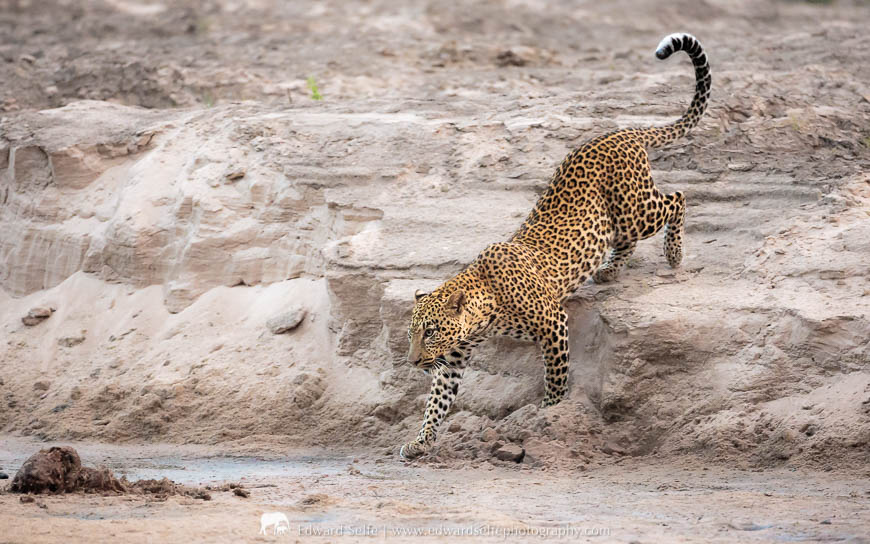
As the light levels fell, the male charged across the sand to challenge his mother’s claim to the prize.
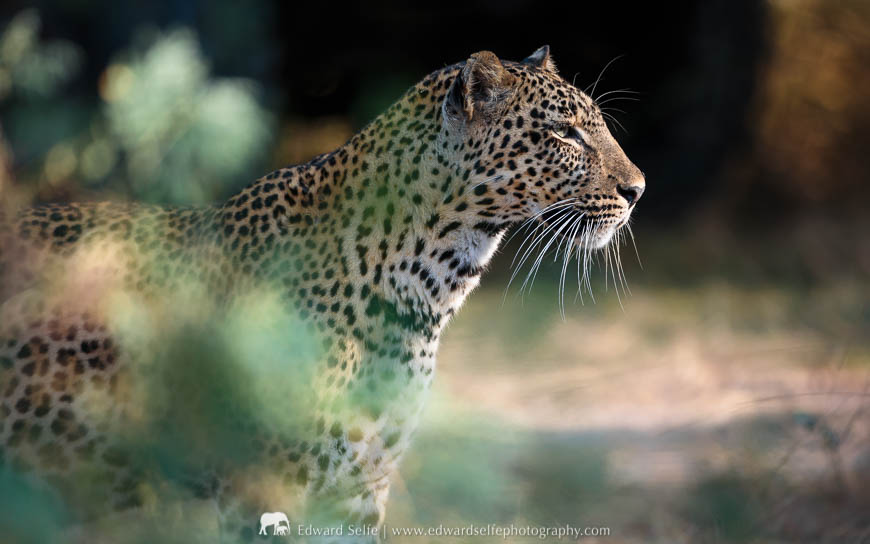
Having been chased from the bush, the female licked the blood from her mouth and went back to watching for her next chance!
We returned the following morning and watched the situation unfold further. It all ended when the male dragged the carcass off across the sand river to a nearby bush, and the female flopped down to eat the offal that he’d left behind. I wondered why the female had invested so much time in that scenario, but when I checked her teats, it was clear that she was feeding her new litter of cubs. So she is hungry and needs the impala carcass to produce milk. Fingers crossed that she makes a new kill soon!
After the adrenaline dosage of leopards snarling in a bush, we moved off a few hundred meters and stopped for a coffee break at the river. As we did so, a group of giraffe bulls came down the opposite bank began to ford the river. It was clear that this was the first time they had tried to do so this year, as they had no idea which route to take. They went back and forth, finally abandoning the idea when they couldn’t find a path that was shallow enough! But it’s a clear indication that the dry season is coming and the river will become the mecca that it is famous for!
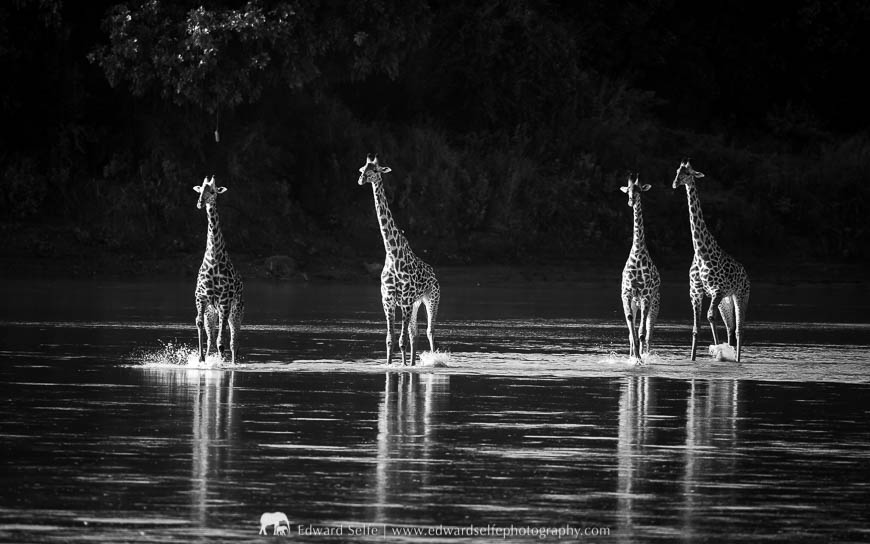
The giraffes are in the sunlight, but the bank and water behind are in the shade. The differential lighting creates this stunning effect.
Peter, Steve and I had a blast over these 10 days in the Luangwa. This report is presented in real-time, offering information about the quiet days as well as the days when we didn’t know which was to turn! The Luangwa is an extraordinary National Park which offers sightings that match or exceed anywhere in Africa….but it’s still possible to have quiet days when Nature is taking a break. It’s for this reason that I recommend safaris of at least a week, to ensure that visitors enjoy everything that this area has to offer.
2019’s safaris are in the pipeline and will be on my site soon. As always, they will be guidelines and the actual trips will be tailored around you. So please get in touch if you are thinking about a safari, and I’ll be happy to build something around your preferences. Added to this, I am adding the massive, diverse Kafue National Park, and the stunning forests of Mana Pools National Park to my safaris for this year and next. Get in touch for either of those destinations and I look forward to hearing from you.


